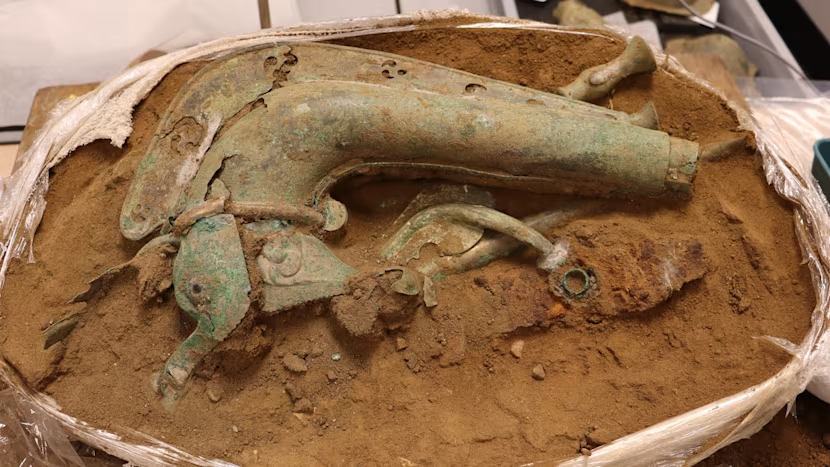The Greek Ministry of Culture and Sports is proceeding with the construction studies of the outer shell at the burial monument of ‘Kasta Tomb’ and the visit routes to the archeological site.
The Central Archaeological Council unanimously gave its opinion on the approval of the architectural preliminary design for the construction of the outer shell between the precinct and the first partition wall adorned with the sculptures of the Sphinx at the burial monument at the tomb of Casta in Amphipolis, Macedonia, highlighting the surrounding area of the monument, as well as the visit routes to the archeological site. The studies are a specialization of the approved architectural study of the Casta Tomb (December 2019).
The construction of the outer shell of the monument aims at:
The permanent protection of this place, in which the porch and the roof are not saved, because of humidity and external weather conditions, as its walls have sensitive coatings and colors. For similar reasons, the Sphinx sculptures must be protected.
The contribution to ensure stable temperature and humidity conditions, with the additional installation of electromechanical installation for the entire burial monument, including lighting and the possibility of air conditioning.
The shell was designed to refer to the geometry and dimensions of the ancient portico, without copying it, with completely abstract architectural features. The goal is its harmonious presence in the space in relation to the monumental ensemble, while serving functional needs, such as accessibility and viewing by the visitor.
The accessibility of the project to the disabled is also ensured, with a route from the entrance of the archeological site to the entrance of the burial monument. There will be a special mechanism for a small elevator, in contact with the external metal ladder.
Inside the monument, raised access floors are formed with steps, which lead to the glass floor, which will cover the pebbles of Area 1, while in Area 2, a perimeter corridor with glass floor will be constructed for the view of the Caryatids and the of the third room, where the mosaic of the "Persephone' s Abduction" is located.
The studies were divised by Michalis Lefantzis, Dr. Architectural Engineer of the Ministry of Culture, Head of Archaeological Works and Studies in the Ephorate of Antiquities of Athens and researcher / supervisor of the restoration work of the monument and member of the excavation team of the mound.
Kasta Tomb
The Kasta Tomb (Greek: Τύμβος Καστά), also known as the Amphipolis Tomb (Greek: Τάφος της Αμφίπολης), is an ancient Macedonian tomb that was discovered inside the Kasta mound (or tumulus) near Amphipolis, Central Macedonia, in northern Greece in 2012 and first entered in August 2014. The first excavations at the mound in 1964 led to exposure of the perimeter wall, and further excavations in the 1970s uncovered many other ancient remains.
The recently discovered tomb is dated to the last quarter of the 4th century BC. The tumulus is the largest ever discovered in Greece and by comparison dwarfs that of Philip II of Macedon, father of Alexander the Great, in Vergina. The excavation team, based on findings unearthed at the site, argued that the tomb was a memorial dedicated to the dearest friend of Alexander the Great, Hephaestion.



![screenshot-www.culture.gov.gr-2021.09.07-21_15_56https_www.culture.gov.gr_el_Information_SitePages_view.aspx_nID=3934&fbclid=IwAR36aTey5gRC9VXO4ojhQhznquFn9eI-QPFpWcs3m_OpqrTNs_V5-4a9W-0_prettyPhoto[Gallery]_3_{date}.jpg](https://images.squarespace-cdn.com/content/v1/6047d405b02148755fb6e601/1631038628230-5R32F4XYYBNL6VL7M90M/screenshot-www.culture.gov.gr-2021.09.07-21_15_56https_www.culture.gov.gr_el_Information_SitePages_view.aspx_nID%3D3934%26fbclid%3DIwAR36aTey5gRC9VXO4ojhQhznquFn9eI-QPFpWcs3m_OpqrTNs_V5-4a9W-0_prettyPhoto%5BGallery%5D_3_%7Bdate%7D.jpg)






